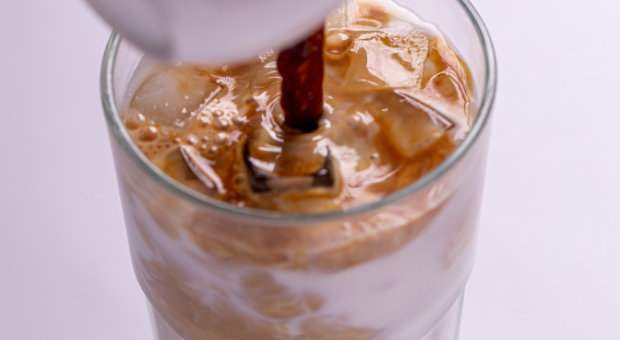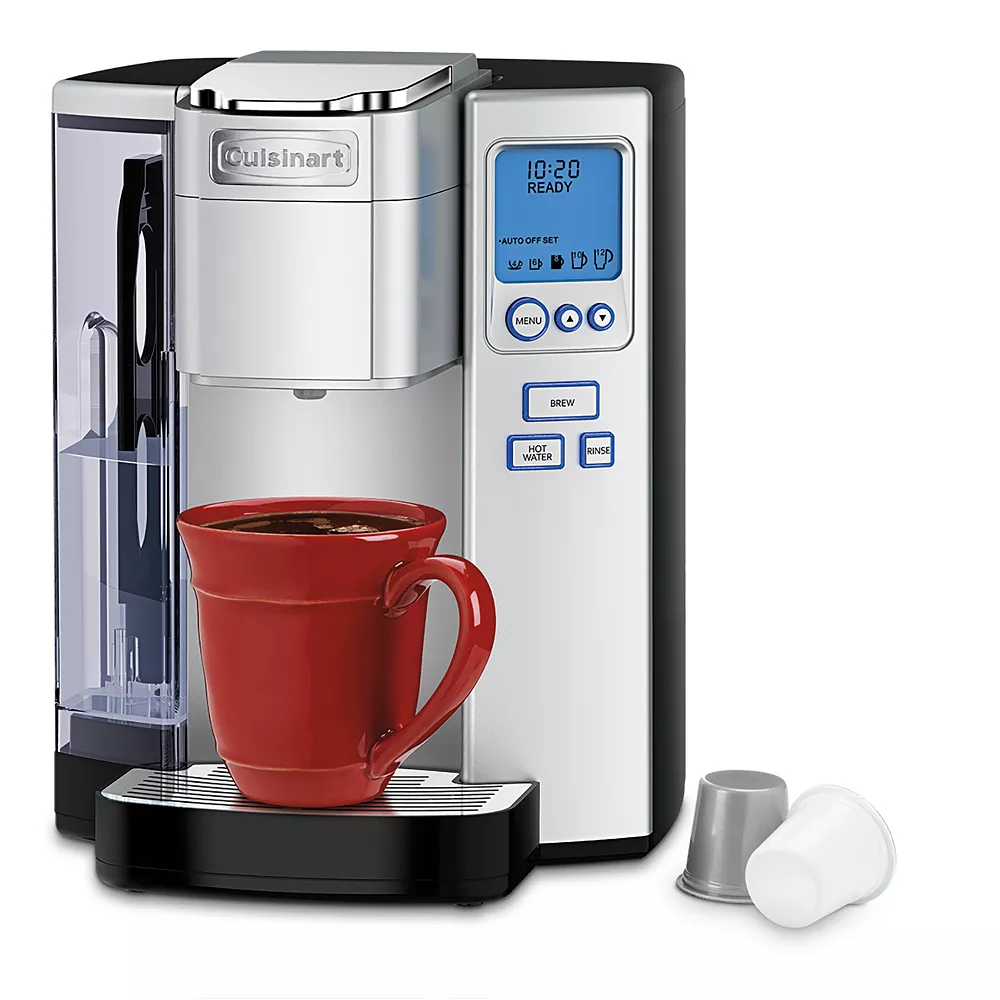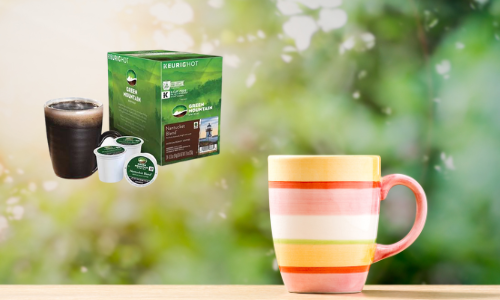K-Cups Coffee , Portion pack and Single Serve Coffees
The Story how K-Cups Coffee came to our life
K-Cups Coffee Review was the last to be at the single-serve filter , coffee-capsule market back in 2013. The rise in popularity of
K-Cups Coffee
was something that small, high-end coffee roasting businesses were watching with some interest. Our tastings this month have shown that most high-end roasting companies have ignored the potential benefits and threats of single-serve capsule-brewing. The specialty retail market has settled in to a higher level of roasters that produce more complex (and sometimes more expensive!) single-origin coffees. This contrasts with the increasing number of informed buyers who prefer to make their own coffee. This market is now dominated by convenience-first Kcups/capsules. These capsules are less expensive than Robusta-heavy blends that come in cans or jars, but they are also less distinctive.

We expected to find at least a few new and exciting single-serve coffees, given the recent advancements in single-serve coffee capsules. This includes new capsule designs, more coffee roasters joining the single-serve market, and a completely new capsule system by Nespresso.
Nearly fifty coffees were evaluated in capsule format. They are all designed to make American-style, long-lasting coffee (not espresso). The K-Cups were Keurig-licensed K-Cups that were used to test 17 coffees. Twenty-four coffees were also available with other Keurig compatible capsule designs. Six of the capsules were proprietary and could only be used in conjunction with the NespressoVertuoLine system. This system, which produces froth-topped American filter espresso, was created to rival the Keurig.
What about the K-Cups and Compatibles ?

First, the Keurig compatible capsule coffees. Two high-end specialty coffees were found in Keurig-compatible formats. The Giv COFFEE Ethiopia Yirgacheffe Konga Natural, which is 90-rated, and an unorthodox coffee from Taiwan, Sancoffee Taitung Guanshan Lot 12. This was a great coffee, but it was constrained by the capsule size. A solid cup was obtained from Green Mountain Coffee Roasters’ Sumatra Reserve Extra Bold (88), a classicly rich and chocolatey coffee. We also enjoyed a perfectly balanced, lightly citrusy El Salvador from HiLine Coffee, which retails for $6.99 per 12 capsules.
Our remaining five 87-rated coffees, which make up our review for this month, were all worth mentioning. They ranged from the refreshingly zesty and citrusy medium roast Aria Blend Blonde from Starbucks to the well-modulated, lively dark-roast mix from Whidbey. We did not find many good, but repetitively boring coffees in these Keurig compatible capsules.
The good news is that only two of 41 licensed Keurigs or Keurig compatible samples were found to be contaminated. We also found only three additional Keurig-compatible capsules as being completely woody and empty. The average rating of Keurig-compatible capsules from all designs was 84.8. This is high of 90 and low of 77. The average rating of the 17 official Keurig-licensed K-Cups ranged from 85.7 to 80.
Then Comes Freshness
Another problem was that many of the coffees in the capsules we tested seemed a little stale. This observation could not be confirmed through quantitative testing because these small capsules were too small to provide reliable readings of residual oxygen inside the packaging. One indicator that the packaging has not sabotaged staling is low-to-no residual oxygen. Other signs weren’t so hopeful. Other signs were not encouraging. We frequently detected a woody taste in many samples. This was one sign that there was staling. The “best before” dates on packaging are often alarming. It suggests that the manufacturers expected the packaging would protect the freshness for at least a year.
The Coffee
Another problem that Coffee Review is most concerned about was the lack of distinctiveness in the coffee contained in nearly fifty of the capsules we tried. The majority of samples we tested were average, but not particularly exciting. Only a handful were small-lot, single origin coffees that have received high ratings on Coffee Review. The Giv COFFEE Ethiopia Yirgacheffe Kona Natural, rated 90, was our best. It came in an UpShot capsule containing 11 grams of ground coffee and produced a near perfect extraction at a 6-ounce setting. Similar Ethiopia Yirgacheffe Konga Naturals, possibly from the same farmer, received average ratings of 93 from Coffee Review when brewed from freshly ground whole-bean. The extraction in the Giv Coffee capsule was excellent and the roast was appropriate and tactful. This suggests that the shadow staling of the coffee was most likely what prevented this coffee from receiving a higher rating.
Recalling the Nespresso VertuoLine caps, it is possible that nuance-dulling was more important than the quality or constituent green coffees to explain the disappointing performance. The VertuoLine capsules’ overly efficient extraction seemed to result in a loss of aromatic grace notes and a strong emphasis on bitter, salty, or woody base notes. People who have traveled to north-central Europe will be familiar with the typical way one gets a black coffee. This is a three-to five-ounce cup of espresso, which is a type of super-long espresso shot. Maybe it was a desire for this type of coffee that led to Nespresso offering a long cup. This cup, when measured against all the relevant standards for filter coffee from American, European, and Scandinavian coffee associations, was clearly over-extracted.
The Third Wave of is sitting out single-serve
One final question that brings us back to the beginning of the article is: Why hasn’t Coffee Review more of the innovative, paradigm-changing roasters (sometimes called “third wave” roasters), entered the single-serve market. There are many reasons I believe.
- Many are doing well, mostly selling whole-bean coffees to their customers. Single-serve capsules can only be made right if there is significant investment and commitment in new packaging procedures. If you can do well with whole-bean, why risk it?
- Single-serve capsules are now being used as a way to increase the value of coffee companies, from Green Mountain through Starbucks and Peet’s to older Robusta-heavy brands such as Folgers. This makes single-serve less appealing to third-wave coffee drinkers, who have adopted an anti-K-Cup philosophy.
- There’s also the problem of waste. Many small roasting companies are against recycling coffee by pre-grinding it and sealing it in foil-topped plastic cups rather than selling whole beans in larger bags. This area has seen some improvement. Intelligent Blends is a Coffee Reviewadvertiser that packs private-labeled coffees in #5 recyclable capsules. Recyclable can also be made from the soft-sided UpShot capsules. The capsule lids can’t be recycled, and the coffee grounds must be removed from the capsules for composting. The porous soft-sided UpShot capsules do not protect coffee. Secondary packaging is required to protect the coffee from moisture and oxygen. Secondary packaging cannot be recycled at the moment. While I believe that compostable capsules will solve the waste problem in the future, it is still prohibitive for high-end roasters to enter the single-serve capsule marketplace.
Regardless, it seems that the micro-lot loving, high-end roasting coffee companies seem to have moved on beyond the single-serve opportunity and left it to larger volume counterparts. There may even be dearths among these companies. The Green Mountain Kenyan Sumatra Reserve and Green Mountain Kenyan AAA capsules have been a staple of K-Cup coffee for years. Will we ever again be able to enjoy Keurig/Green Mountain K-Cup coffee of the highly prized Geisha variety?
Close Perhaps, but No Ninety-Four
However, we did taste through the month’s mediocre, repetitive and inconsistent assortment of compatibles and K-cups. We also tested strength and extraction, and then tore open and inspected various capsule designs. It became clear that a K-Cup-compatible or Keurig-compatible capsule could be made that can at least showcase exceptional coffee with a rating loss in Coffee Reviews terms of only a few points. With a good capsule design and a 6-ounce cup volume, one can achieve a gold-cup extraction at 11 grams per capsule. Additional requirements include great green coffee, sensitive roasting and, most importantly, packaging the coffee fresh after roasting/grinding. This allows for degassing. If someone is willing and able to spend the money, even the last challenge, I believe it can be met with current technology.
Afterword – Making Your Own K-Cups
This leads to the inevitable question: How do you pack your own K-cups? This option was discussed in detail in our April 2013 article Not Quite Here: The New World of K-Cups. This article contains detailed reviews of the current Keurig-compatible refillable caps and recommendations for how to use them.

